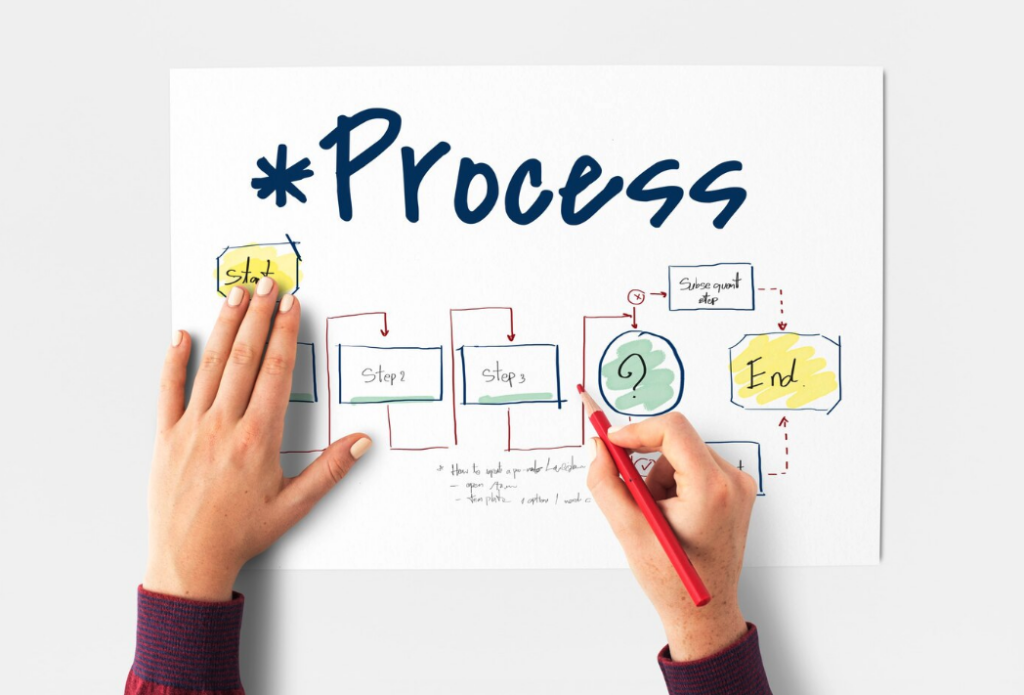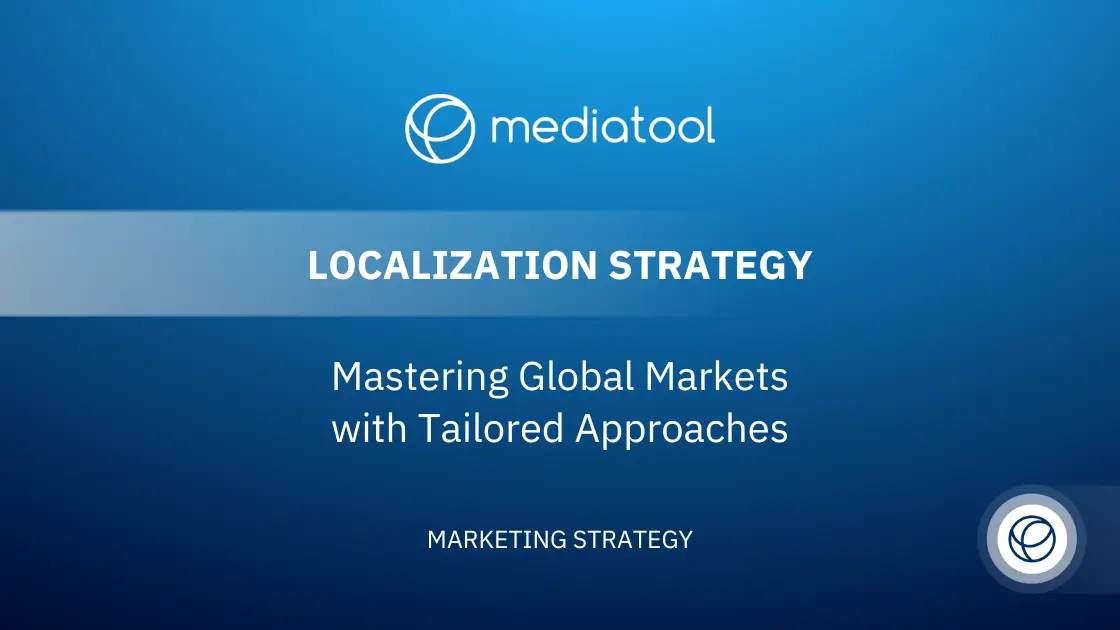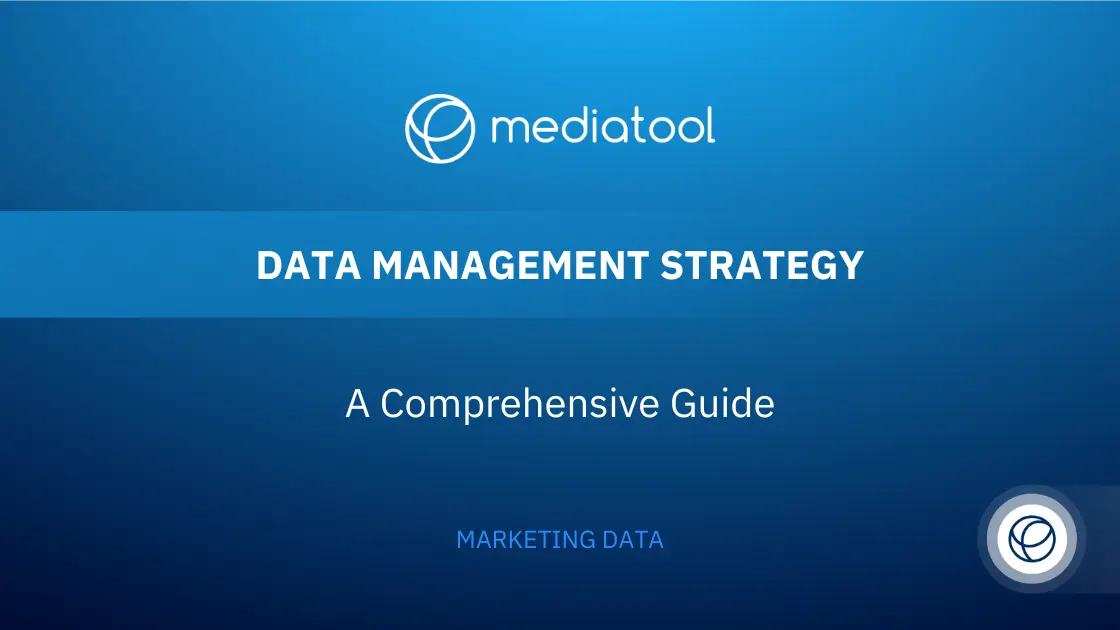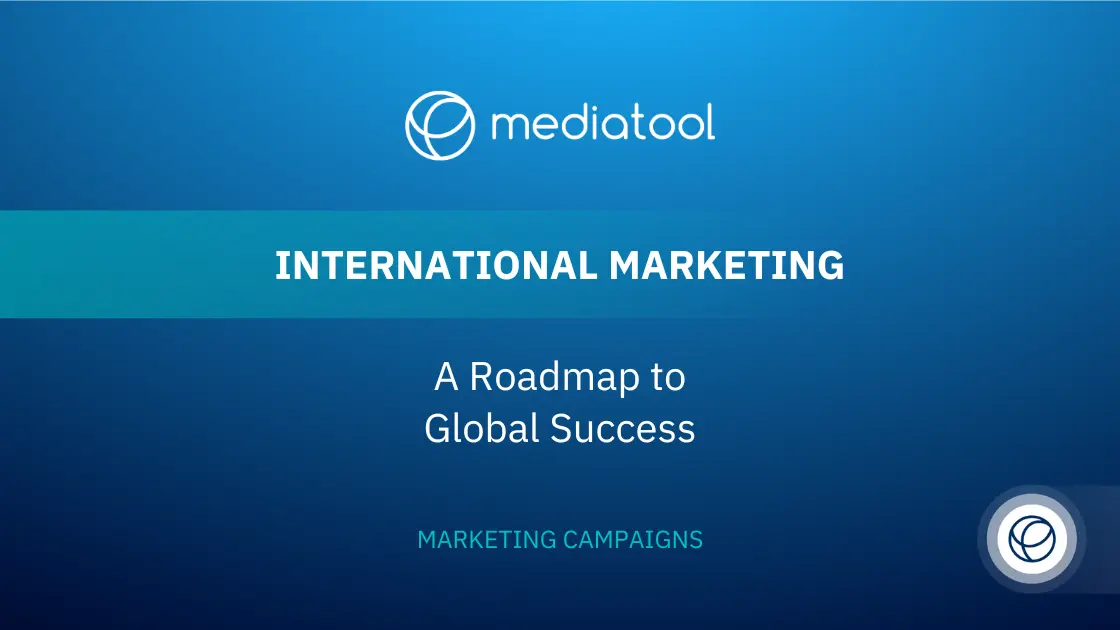Today’s marketing teams are faced with the challenge of maximizing their marketing efforts with fewer resources while striving to forge more profitable customer relationships. As a marketer, you’re likely familiar with this scenario. You’re constantly adapting to the latest trends, evolving customer needs, and industry shifts, all while managing your marketing mix and budget effectively. This juggling act is crucial for creating impactful campaigns that resonate with your target audience and drive results.
The integration of technology into the marketing process can be a game-changer, yet many fail to harness its full potential. The introduction of new technologies often seems to complicate processes, demanding more time and adding pressure to demonstrate the value of marketing strategies. However, optimizing these processes is key to achieving your marketing goals.
If you’re a marketing leader aiming to secure a bigger budget by delivering satisfaction to both your team and senior management, or a marketer seeking efficient ways to work, our focus is on you.
In this blog, we’ll explore how altering your marketing processes—through planning, collaboration, automation, and leveraging technology—can enhance your results.
We will include topics like customer relationship management, strategic marketing process, the inbound marketing process, and the entire marketing process. We’ll delve into how these elements contribute to building a customer-driven marketing strategy, ensuring customer value, and effectively managing partner relationships.
We’ll also discuss the significance of understanding your target market, utilizing marketing tactics for product or service promotion, and engaging potential customers. The role of customer equity, content marketing processes, and the use of project management tools in orchestrating marketing campaigns will be highlighted.
Additionally, we’ll look at how integrated marketing plans, effective use of marketing dollars, and a focus on satisfying customer needs through an innovative marketing concept can lead to success.
Our aim is to guide you through the essential steps of the marketing process, from content creation and data analytics to influencer marketing and conducting a SWOT analysis. We’ll emphasize the importance of tracking tools, content publishing, and utilizing social media to connect with your desired audience.
Lastly, we’ll touch on aligning marketing strategies with your business goals, mission statement, customer profile, and conducting a PEST analysis to remain competitive in the market.
1. Review Your Existing Marketing Process

To optimize your marketing strategy and enhance customer relationships, begin by scrutinizing the existing marketing processes within your team. Reflect on daily tasks and workflows, asking questions like:
- What specific activities do team members undertake daily within their roles?
- Are templates utilized to expedite repetitive tasks, or is there a tendency to start from scratch?
- How much time is dedicated to these tasks, and is there potential for time reduction?
- What proportion of these tasks require manual effort, and could any be streamlined through automation?
- Does the team operate in isolation, or is there seamless access to necessary data and insights?
- Is the team equipped with appropriate technology to facilitate their duties?
- Identify any bottlenecks, including yourself, that might be hindering efficiency.
- Assess the effectiveness of agency partnerships and the potential for improvement.
- Explore ways to bolster collaboration within the team.
- Consider insights that a digital marketing audit could reveal.
After conducting this thorough analysis, prioritize addressing the most significant issues and securing quick wins. For instance, investing in marketing automation tools can enhance efficiency and reduce process complexity, addressing several challenges simultaneously. Sharing templates among team members for common tasks can be a simple yet effective quick win.
Incorporating these strategies into your marketing efforts is not just about refining processes; it’s about cultivating a customer-driven marketing strategy that values customer needs and focuses on building profitable relationships.
This approach also involves analyzing the entire marketing process, from content creation to data analytics, and ensuring your marketing tactics are tailored to your target audience.
Emphasizing project management tools and content marketing processes will help in more effectively engaging potential customers and managing marketing materials.
Additionally, adapting your marketing mix to align with strategic marketing processes and the target market will improve customer equity and the perceived value of your product or service.
Ultimately, these steps will contribute to fulfilling your marketing goals, enhancing customer relationships, and maintaining a competitive edge in the marketplace.
By continually reviewing and adapting these processes, you ensure that your marketing efforts are not only efficient but also effectively aligned with your business goals, mission statement, and the evolving needs of your target customers.
2. Implement Asynchronous Communication in Your Marketing Team
The Importance of Asynchronous Communication
In the realm of marketing, effective communication is paramount. However, the constant expectation of immediate availability can hinder the focus necessary for tasks requiring deep concentration, such as creating media plans, budgeting, copywriting, or designing advertising assets.
The introduction of asynchronous communication within your marketing team changes this dynamic, allowing team members to manage their work schedules more effectively, particularly in remote settings.
The Impact of Interruptions on Productivity
It’s crucial to understand that frequent interruptions, like responding to emails or instant messages, can significantly disrupt productivity. Studies indicate it takes approximately 23 minutes to refocus after an interruption.
Establishing periods for responding to communications can mitigate this issue, allowing team members to dedicate blocks of time to focused work, followed by periods allocated for communication.
Balancing Asynchronous and Synchronous Communication
While asynchronous communication is beneficial for enhancing productivity and reducing workflow bottlenecks, there are instances where real-time communication is more effective, such as brainstorming sessions for campaign ideas.
The key is to find a balance that suits your team’s needs, focusing on outcomes and efficiency.
Streamlining Workflow with Asynchronous Tools
To further streamline your marketing processes, consider using Mediatool for creating briefs, seeking approvals, and collaborating on plans.
This centralization reduces the back-and-forth typically associated with email and messaging, aligning with your strategic marketing process and enhancing the efficiency of creating marketing materials.
Integrating Asynchronous Communication with Marketing Strategies
Aligning with Marketing Goals and Customer Needs
Integrating asynchronous communication methods aligns with broader marketing strategies, addressing customer needs more effectively and potentially improving customer relationships.
This approach contributes to a customer-driven marketing strategy, where understanding the target audience and market opportunities becomes more streamlined and focused.
Enhancing Content Creation and Marketing Research Process
Content creation, an integral part of the marketing process, benefits from uninterrupted focus time, leading to higher quality outputs. Similarly, marketing research activities, such as data analytics and market analysis, can be conducted more effectively when team members have control over their work schedules.
Supporting Business Goals and Mission Statement
Adopting asynchronous communication is in line with achieving broader business goals and adhering to the company’s mission statement.
It fosters an environment where marketing efforts are more strategic, customer-focused, and aligned with the overall vision of the company.
In conclusion, by implementing asynchronous communication within your marketing team, you can significantly enhance the effectiveness of your marketing strategy, streamline your marketing processes, and better meet your customer and business needs.
This approach allows for a more efficient allocation of marketing dollars, supports the creation of a comprehensive marketing plan, and ensures that your marketing team remains competitive and aligned with the evolving marketplace.
3. Adopt an Agile Marketing Process
Embracing Agile Methodology in Marketing
Agile marketing, characterized by its sprint-based approach, is an innovative method where marketing teams work in short, focused bursts to complete projects. This approach is particularly effective for unique, one-off projects as well as for ongoing campaigns, ensuring tasks are completed efficiently and to a high standard.
By breaking down tasks into smaller stages within each sprint, agile marketing aligns closely with strategic marketing processes, enhancing the overall marketing strategy.
Boosting Team Performance with Agile Practices
Agile marketing has been demonstrated to significantly boost teamwork, collaboration, and performance. Teams typically engage in 2-3 week sprints, with each task broken down into manageable stages.
This structured approach not only streamlines the marketing process but also aligns with the creation of a customer-driven marketing strategy, focusing on delivering value to the target audience.
The Role of Stand-Up Meetings in Agile Marketing
Stand-up meetings, typically lasting about fifteen minutes, are a cornerstone of agile marketing. These brief, regular check-ins, held daily or every other day, allow team members to update each other on their progress and any challenges encountered.
This practice ensures that issues are addressed promptly, rather than waiting until a campaign is already live, thus optimizing the marketing efforts and resources.
Promoting Increased Collaboration and Customer Focus
While agile marketing often involves individual task completion, the sprint framework ensures that all team members are working towards a common goal. Regular stand-up meetings and continuous iterations foster a culture of collaboration and clear communication, directly impacting the success of marketing initiatives.
This collaborative environment is crucial for understanding and addressing customer needs, positioning products or services effectively, and enhancing customer relationships and equity.
Agile Marketing’s Impact on the Marketing Mix and Material Creation
Agile marketing greatly influences the marketing mix and the process to create marketing materials. By adopting this approach, marketing teams can more effectively engage potential customers, utilize marketing research and data analytics, and create content that resonates with their desired audience.
This methodology allows for a more dynamic and responsive marketing strategy, adapting quickly to market opportunities and ensuring that marketing dollars are spent efficiently.
Adopting an agile marketing process can transform the way marketing teams operate, making them more efficient, collaborative, and customer-focused.
This approach aligns with business goals and mission statements, ensuring that marketing strategies are not only effective but also adaptive to the evolving needs of the market and the target customers.
Agile marketing thus stands as a key element in maintaining a competitive edge and achieving long-term success in the dynamic field of marketing.
4. Equip Your Team With the Right Marketing Technology

The Role of Technology in Streamlining Marketing Processes
In today’s fast-paced marketing landscape, equipping your team with cutting-edge technology is not just an option, but a necessity.
The right marketing technology can automate numerous tasks, streamline your workflow, and significantly enhance your overall marketing efforts.
While initially it might seem like a substantial investment, the long-term benefits in terms of time saved and improved campaign results are substantial.
Leveraging Tools for Better Coordination and Results
Mediatool offers functionalities that can revolutionize how your team operates. With such tools, you can create and share briefs, templates, and plans accessible to everyone on the team.
This centralized approach ensures that all team members are working from the same plan, promoting clear communication and uniformity in efforts.
The ease of sharing documents, messaging, and streamlining approval processes greatly simplifies many everyday tasks, improving efficiency and reducing time wastage.
Leading by Example in Technology Adoption
However, merely having access to advanced marketing tools is not enough. To truly reap the benefits of these technologies, they must be utilized to their fullest potential. This requires you, as a leader, to champion their use and set an example for your team.
Effective use of these tools is critical to avoid wasting both time and budget and to ensure that your marketing strategy is as efficient and impactful as possible.
Strategic Impact of Technology on Marketing Goals
Aligning Technology with Marketing Strategy and Customer Needs
Incorporating these technological tools aligns closely with a customer-driven marketing strategy. By leveraging data analytics and targeting capabilities, these tools help in understanding and catering to your target audience more effectively, thereby enhancing customer relationships and value.
Enhancing Content Creation and Distribution
Tools like Mediatool also facilitate content marketing processes, enabling the creation of high-quality marketing materials tailored to your target market.
This not only helps in engaging your customers more effectively but also ensures that your marketing tactics are aligned with your overall marketing goals and strategies.
Keeping Pace with Market Dynamics
In the ever-evolving realm of marketing, staying competitive means being able to quickly adapt to market opportunities and customer needs.
Advanced marketing technology aids in conducting thorough market research, analyzing customer profiles, and ensuring that your marketing plan remains agile and responsive to market dynamics.
Equipping your team with the right marketing technology is a strategic decision that pays dividends in terms of efficiency, campaign effectiveness, and customer engagement. I
t’s a step towards ensuring that your marketing processes are not just streamlined but also aligned with your business objectives, market trends, and customer expectations.
This strategic integration of technology empowers your team to deliver better results, maintain competitive advantage, and achieve the desired impact in the marketplace.
5. Constantly Review Results and Adapt Accordingly

Embracing a Dynamic Approach to Marketing
As an innovative marketer dedicated to fostering change, it’s crucial to regularly assess not just the outcomes of your marketing efforts but also the processes that drive them.
This means applying the same rigor to evaluating your marketing workflows as you do to analyzing campaign data and marketing strategies.
The Importance of Process Review in Marketing Strategy
By focusing on the processes behind your marketing activities, you can achieve more rapid and significant improvements in your results.
Just as you would iterate, test, and modify tactics in your marketing campaigns, apply this approach to refine your marketing operations. If a particular strategy or process doesn’t yield the expected results, it’s essential to review and adjust it accordingly.
Aligning Marketing Efforts with Business and Customer Goals
Concentrating on the methodologies of your marketing strategy will expedite the achievement of your marketing goals.
This strategic approach involves understanding your target audience, refining your marketing tactics, and ensuring that your efforts contribute to building meaningful customer relationships and delivering customer value.
Integrating Continuous Learning and Improvement
Continually reviewing your marketing processes enables you to stay aligned with the evolving marketplace and customer needs.
It’s about creating a customer-driven marketing strategy that not only satisfies customers but also enhances customer equity and loyalty.
This ongoing process of evaluation and adaptation is essential in maintaining a competitive edge, ensuring that your marketing plan is always responsive to market opportunities and customer expectations.
Utilizing Data and Feedback for Marketing Excellence
Leverage tools for market research, data analytics, and tracking to gather insights that inform your marketing strategy.
This includes conducting SWOT and PEST analyses, understanding customer profiles, and using feedback to fine-tune your approach.
By consistently analyzing these factors, you can identify customer problems more effectively, refine your positioning strategy, and ensure that your marketing efforts are as effective and efficient as possible.
A continuous review and adaptation process is vital for any marketing strategy that aims to be responsive, customer-focused, and effective. It’s about staying ahead in a dynamic field, constantly fine-tuning your approach to meet and exceed both business objectives and customer needs. This dynamic approach ensures that your marketing efforts are not only innovative but also consistently aligned with the changing demands of the marketplace.
Conclusion
Revolutionizing your marketing processes is a dynamic journey towards achieving enhanced results and building stronger, more profitable customer relationships.
The key lies in constantly evaluating and adapting your marketing strategy to align with evolving customer needs and market opportunities. By integrating technology, embracing agile methodologies, and focusing on effective communication within your marketing team, you can significantly streamline your marketing efforts.
Implementing these strategies involves a comprehensive understanding of your target audience and tailoring your marketing mix to meet their needs. Utilizing data analytics and project management tools, while emphasizing content creation and publishing, helps in precisely targeting potential customers and building customer equity.
Remember, the ultimate goal of these changes is not just to optimize your marketing processes but also to elevate the customer experience, thereby fostering customer-driven marketing strategies.
As you embark on this path, keep in mind that the entire marketing process, from market research to influencer marketing and content marketing, needs to be agile and responsive. This approach will help in creating marketing materials and campaigns that resonate with your desired audience, ensuring repeat purchases and high customer equity.
By focusing on these aspects, and regularly conducting SWOT and PEST analyses, your marketing team can stay ahead in the competitive marketplace, effectively engage customers, and contribute significantly to your company’s business goals and mission statement.
Remember, the effectiveness of your marketing strategy is a reflection of how well you understand and meet your customer’s needs, creating value for both your audience and your organization.
Embrace these changes, and watch your marketing results soar, solidifying your position as an innovative marketer committed to excellence and efficiency.




